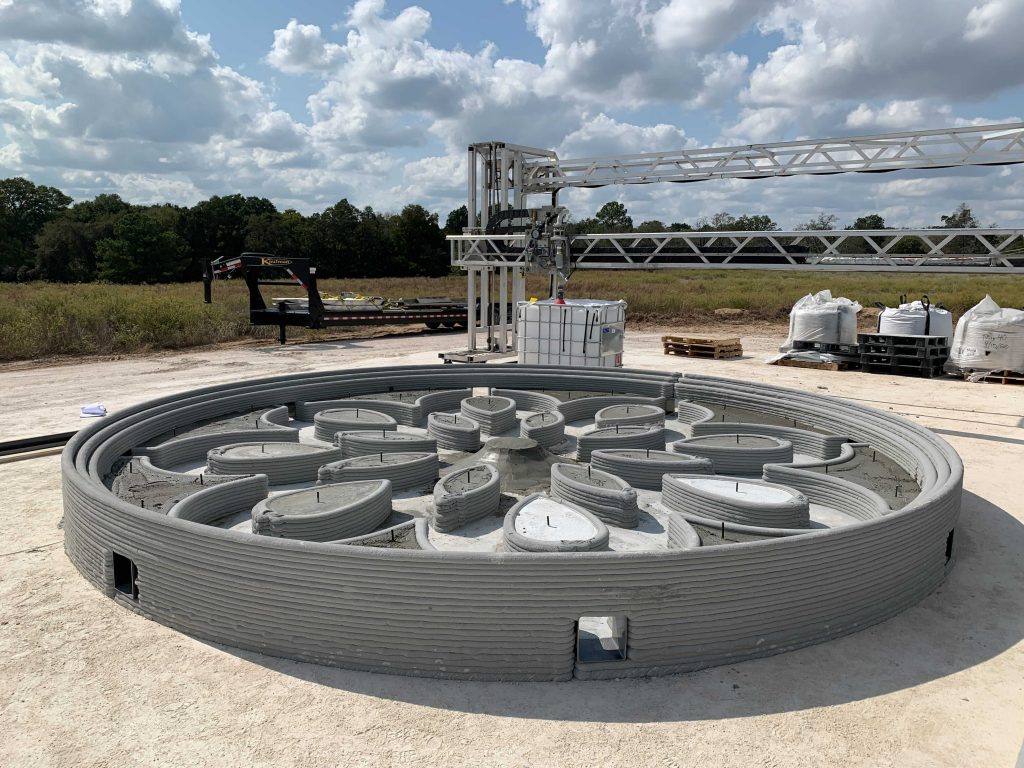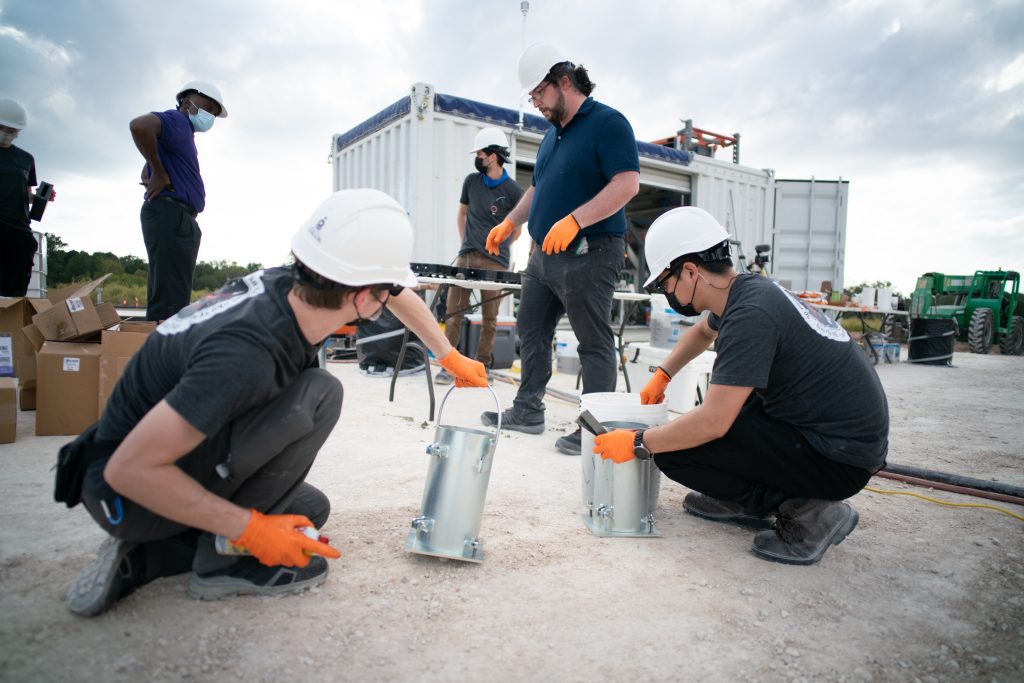A team of undergraduate students from ten U.S. colleges and universities – all members of NASA’s Artemis Generation – have designed a 3D printable, reusable launch and landing pad for future lunar missions.
Dubbed the Lunar Plume Alleviation Device, or Lunar PAD, the concept is designed to be 3D printed using the lunar regolith material found directly on the surface of the Moon. It focuses on remedying an unsolved problem experienced when initiating landing burns, whereby the force from an engine’s exhaust can cause loose lunar dust to kick up and stir. Its novel mandala-esque internal geometry serves to direct lunar dust outward with a laminar flow, reducing the intensity of the otherwise very turbulent dust storms caused by lunar landings.
The student team even presented a research paper on its concept landing pad earlier this month at the American Institute of Aeronautics and Astronautics’ 2021 SciTech Forum. John Dankanich, Chief Technologist at NASA’s Marshall Space Flight Center, stated, “When you look at this publication, the diversity of students and schools is very unique. There is a clear advantage in engaging a wide range of diverse teams to develop innovative solutions that address NASA technology gaps.”

A 3D printed lunar pad
The design was first proposed at the NASA Proposal Writing and Evaluation Experience back in 2019, a 12 week training course organized by Dankanich. The idea was called Dust DEVILS at the time, and its top ranking won the team funding and technical support from NASA’s in-house subject matter experts. Then, in June of 2020, the team presented the final design to experts at Marshall, which secured them the funding necessary to print and test a prototype here on Earth.
Dankanich adds, “The proposal addressed a technology pain point, as the project enables a safe and reusable landing pad required for sustainable lunar exploration. The team worked many hundreds of hours, engaged NASA subject matter experts, and went from concept formulation to a preliminary design. They then turned that design into reality with the subscale construction, all in a few short months.”
The pad itself comprises two individual layers – a roof on which the rocket sits, and an internal volume filled with channels for redirecting exhaust. The roof features slits that enable the exhaust to disperse throughout the inner channels, where it is pumped out of vents around the edge of the launch pad. The weight of the rocket is supported by a central cone and dividers.

Testing the prototype
To test the feasibility of the design, the students worked with Marshall’s experts to print a subscale prototype at Camp Swift in Texas last year. They used a concrete 3D printer developed by construction firm ICON and a special cement-based material for the project.
Mike Fiske, an In-Space Manufacturing Engineer with Jacobs Engineering Group in Marshall’s Space Technology Development Branch, adds, “It has been a pleasure working with these students over the last year and helping to advance the state of the art in planetary launch and landing pads.”
Fiske and the students intend to return to Camp Swift by late February to test the prototype pad under high-temperatures and stresses with a real rocket hot fire test and material sample evaluations. The instruments required to measure parameters such as temperature, strain, and exhaust flow were integrated into the pad during the printing process.
Beyond just the landing pad, NASA has been playing around with the idea of in-space manufacturing for a number of years now. The space agency originally selected engineering firm COSM Advanced Manufacturing Systems to develop an automated electron beam 3D printer back in 2017. The firm recently announced that it had begun working on the final development and build of the DED-based metal 3D printer, which is intended to support NASA’s needs for in-space component repair.
Elsewhere, scientists from the Technical University of Braunschweig and Laser Zentrum Hannover (LZH) recently 3D printed lunar regolith under zero gravity for the first time. As part of the ‘MOONRISE’ project, the team mounted a custom laser onto their ‘MIRA3D’ lunar rover and melted moondust into spherical shapes, paving the way for a flight-ready model that could enable future astronauts to fabricate long-term structures on the Moon.
Subscribe to the 3D Printing Industry newsletter for the latest news in additive manufacturing. You can also stay connected by following us on Twitter and liking us on Facebook.
Looking for a career in additive manufacturing? Visit 3D Printing Jobs for a selection of roles in the industry.
Featured image shows the internal geometry of the 3D printed lunar launch and landing pad. Photo via ICON.


